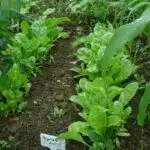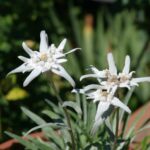August is a great time for planting the perfect vegetable and flower combination in your garden. With the summer sun still high in the sky, there are plenty of options to choose from that will thrive in the warm weather. Planting vegetables and flowers in August allows you to enjoy a colorful display of blossoms and reap the rewards of an abundant harvest all season long.
The possibilities for vegetable and flower combinations are endless, but it’s important to choose plants that will thrive together throughout the season. Be sure to consider both the light conditions of each plant as well as their individual water needs when selecting varieties. To help you find the best vegetables and flowers to plant this August, we’ve put together a guide featuring some top picks perfect for any garden.
From fragrant herbs like basil and oregano to eye-catching flowers such as zinnias and impatiens, our list has something for everyone! No matter what type of garden you have or how much space you have available, let this guide be your starting point for creating an outdoor oasis full of vibrant colors, delicious produce, and sweet scents that will last you all season long.
Why August Is A Good Time To Plant
August is an ideal time to plant vegetables and flowers in many parts of the country. Not only does the weather tend to be milder than it is during other months, but there’s also a greater chance of rain, which helps newly planted items get off to a strong start. Plus, August marks the beginning of the autumn season, so it’s an excellent opportunity to get ahead on your garden prep before winter arrives.
Along with these environmental conditions, August can also offer several advantages when it comes to what specifically should be planted. Since many plants take a long time to reach maturity and produce edible fruits or produce blooms, August gives you plenty of time for them to develop before the cold weather sets in. Additionally, many flower bulbs require planting in late summer for them to bloom in springtime – so if you plan ahead now, you’ll have plenty of pretty blooms around come next year!
Now that we’ve established why August is such an optimal time for planting, let’s take a look at some of the best vegetables and flowers you can plant this month.
Which Vegetables To Plant In August
As summer begins its descent into fall, the garden is preparing for a new season of growth. And August is the perfect time to plant vegetables as they will get plenty of sun and heat before the temperatures drop. It’s like a window of opportunity that closes all too soon.
To make sure your garden flourishes during this brief period, it’s important to choose vegetables that are suited for the conditions. Tomatoes, peppers, squash and Brussels sprouts are all excellent choices for August planting – as they can easily be harvested in the early fall. Leafy greens like kale or Swiss chard are also great options, since they thrive in cooler weather.
When selecting which vegetables to plant, consider how much light they need and how much space you have available in your garden. Also think about whether you want annuals or perennials – as both can provide delicious harvests throughout the year if planted right! With proper planning and care, it’s possible to enjoy a bounty of fresh vegetables as we transition into autumn.
How To Plant Vegetables In August
Planting vegetables in August is a great way to get ahead on your gardening goals for the year. I remember the first time my grandmother taught me how to grow vegetables in the late summer heat – it was an unforgettable experience. As she showed me which vegetables to plant and how deep to dig, I learned that planning ahead and taking into account the local climate and soil conditions is essential for successful vegetable growing.
When deciding what vegetables to plant in August, take into account things like weather patterns, soil nutrients, and water availability in your area. For instance, root crops like carrots, turnips, and beets require cooler temperatures than lettuce or tomatoes. If you live in a hot climate like Arizona or California, you may want to choose warm-weather veggies like squash or peppers instead. Also think about which vegetables will do best in your soil’s nutrient levels – some veggies need lots of nitrogen while others require more phosphorus or potassium.
Finally, make sure there’s plenty of water available for your vegetable garden. While some plants are drought tolerant, most will need at least an inch of water per week during their growing season. You can supplement rainfall with a drip irrigation system or hand watering if necessary – just make sure not to overwater! With all these factors taken into consideration, you’ll be well on your way to harvesting fresh veggies come fall. As you move forward choosing what vegetables to plant in August, keep all these details in mind for a successful harvest.
What To Consider When Choosing Vegetables To Plant
When it comes to planting vegetables in August, you need to get creative! Just like an artist needs the right palette of colors to create a masterpiece, gardeners need to choose the best vegetables to plant this month. To ensure that your garden is a success, there are several things to consider when selecting the right veggies for August.
Firstly, it’s important to think about the time of year and climate. This is especially true for those living in areas with hot summers. While some vegetables thrive in warm weather, others may not be able to withstand extreme temperatures. It’s worth taking the time to research which vegetables are best suited for your area before making any purchases or planting decisions.
Next, consider what type of soil you have available in your space. Different veggies require different types of soil and nutrients in order to reach their full potential. If you don’t know what type of soil you have or how much fertilizer it needs, it’s best to consult with a local garden center or expert who can help guide you in making an informed decision.
Finally, don’t forget about the length of time each vegetable takes to grow and mature. Some varieties can take months while others only take weeks; knowing this information beforehand will give you an idea of when they need attention during their growth cycle and when they will be ready for harvest. With all these factors taken into account, you’ll be well on your way towards having a bountiful summer harvest!
Common Vegetables To Plant In August
As summer reaches its peak, the beautiful bounty of August awaits. The warm days and long nights entice gardeners to plant a delightful array of vegetables for the coming harvest. So what are some common vegetables to plant in August? Let’s take a look.
Like a smiling sun, peppers heat up the garden with their brilliant colors. Bell peppers come in an impressive range of hues from green to yellow, orange, and red. They need ample sunlight and temperatures above 70 degrees Fahrenheit to thrive. Plant them early in the month for the best chance of a strong yield.
Tomatoes also enjoy sunny weather for optimal growth. This versatile summer staple is available in many shapes and sizes, including cherry tomatoes and beefsteaks, and can be planted in containers or directly into the ground when soil temperature passes 65 degrees Fahrenheit.
August also offers plenty of opportunities to experiment with leafy greens like kale, lettuces, spinach, turnips, swiss chard, and arugula. Plant in succession every two weeks or so so that you can enjoy a continuous supply throughout the season. With these ideas as your guide, you’ll be sure to have an abundant harvest this August!
How To Plant Flowers In August
Planting flowers in August can be a rewarding experience, even with the heat of summer. You’ll want to start by selecting your favorite varieties of flowers and preparing the soil. Work in some compost or other organic material to help the soil hold moisture and keep plants healthy. After planting, water your flowers deeply two to three times per week, allowing the top inch of soil to dry before watering again.
When choosing flowers for August gardens, look for varieties that thrive in hot weather and require minimal maintenance. Marigolds, zinnias, sunflowers, and cosmos are all good choices as they are both heat-tolerant and drought-resistant. For more color and texture interest, you could also consider adding ornamental grasses such as blue fescue or pampas grass.
Container gardens are ideal for those who don’t have tilled soil available. Look for containers with good drainage holes at the bottom so that your plants don’t become waterlogged during heavy rainfall or frequent irrigation cycles. Planting smaller flowering plants like petunias or impatiens will give you an array of colorful blooms without taking up too much space in a container garden.
Once you’ve chosen your plants and prepped the soil, all that’s left is to get planting! With a bit of care and attention, you’ll soon have beautiful blooms in your garden this August.
Common Flowers To Plant In August
What an amazing coincidence – it’s August, and time for us to start thinking about which flowers to plant in our gardens! There are so many different varieties to choose from and each has its own unique beauty. In this section, we’ll explore some of the most popular flowers that you can plant in August.
When it comes to choosing what type of flower you want to plant, there are many factors to consider. Some of the more common choices include roses, daisies, petunias, mums, and marigolds. All of these have a beautiful range of colors and sizes, allowing you to create a garden that is truly unique. Moreover, when planting these types of flowers in August, their blooms will last throughout much of autumn as well!
Whatever type you decide on, make sure that you do your research on the specific needs for each flower. For example, some may require full sun while others might need shade; others may require frequent watering while others may be drought-tolerant. Knowing the particular characteristics of the flower before planting is key to ensuring your plants get off to a great start and bloom beautifully throughout the season. With a little bit of knowledge and planning ahead, you can easily create a stunning display with your chosen flowers this month!
What To Consider When Choosing Flowers To Plant
When it comes to choosing flowers to plant in August, there are several factors to consider. The first is the climate where you live; some flowers may do better in colder climates while others will thrive in a hotter, more humid environment. It’s also important to decide which type of flower you want – annuals or perennials – as these will have different requirements for soil types and light levels. Lastly, you must take into account how much time and effort you can put into caring for the plants on an ongoing basis.
Before deciding which flowers to plant, research their individual needs so that they have the best chance of surviving and thriving in your garden. For example, annuals need more frequent watering than perennials and require more sun exposure throughout the day. You should also make sure that the soil conditions are suitable for the chosen plants; too much water or not enough nutrients can cause them to wilt quickly. Additionally, consider adding mulch around them to help retain moisture and keep weeds away.
Finally, look at how much colour and beauty each flower brings to your space. There are many options available with vibrant blooms in various shades of pink, purple, white and yellow that can create a stunning display throughout the summer months. With careful planning and consideration of these factors before planting, you can ensure that your garden has a beautiful array of flowers all year round!
Benefits Of Planting Vegetables And Flowers In August
August presents a great opportunity for gardeners to begin planting vegetables and flowers. Not only is the weather optimal, but there are several benefits associated with planting during this time of year.
The first benefit is that vegetables and flowers planted in August will have plenty of time to establish strong roots before winter sets in. This means they’ll be better able to survive the colder temperatures and lower amounts of sunlight. Additionally, since the days are still quite long, plants can take advantage of the extra hours of daylight to grow more quickly than if they were planted later in the season.
The second benefit of planting in August is that it provides an opportunity for gardeners to fill their beds with a variety of colors, textures, and scents. A wide variety of annuals, perennials, and herbs are available for purchase during this time period, so gardeners can create a unique design that best reflects their style and preferences. Plus, many flower varieties attract bees and other beneficial insects that help pollinate plants throughout the summer months.
With these advantages in mind, it’s easy to understand why August is such an ideal time for planting vegetables and flowers. Gardeners just need to remember to do their research beforehand so they know which plants will thrive best in their particular climate zone. With careful preparation, they can look forward to enjoying a beautiful garden space all season long!
Preparing And Planting New Vegetable And Flower Bed
August is the perfect time to start preparing and planting a new vegetable and flower bed. It’s estimated that more than half of all households in the U.S. have some form of garden, so if you’re looking for ways to spruce up your outdoor area, this is a great option. Before you get started, there are a few tips to keep in mind.
To begin with, decide what type of vegetables and flowers you’d like to plant. It’s important to choose plants that will do well in your climate and soil type – some varieties may need more maintenance than others, so make sure you read up on the specifics before getting started. Once you’ve determined what types of plants will work best for your garden, it’s time to get them into the ground! Make sure to dig down deep enough so that the roots can take hold in the soil – this will help ensure they get adequate moisture and nutrients as they grow.
Finally, it’s essential to pay attention to how much sun each plant needs – some species require more sunlight than others, so make sure you know exactly where each one should go before planting it. With the right preparation and attention, your vegetable and flower bed will be blooming in no time!
Common Pests And Diseases To Consider When Planting
As the August sun starts to heat up, so does the gardening season. It’s an exciting time of year for gardeners as they prepare to see their flowers and vegetables blossom. But before you get too caught up in the thrill of planting, it’s important to consider potential pests and diseases that may be lurking in your garden.
One common issue is root rot, which is caused by overwatering and can quickly ruin crops if not immediately treated. Keep an eye out for wilting leaves or discoloration, both of which can be signs of a disease-infested plant. Additionally, some root-dwelling pests such as nematodes and grubs can cause serious damage to your veggies and flowers if left unchecked.
Fortunately, there are several ways to protect your plants from these pesky critters. Mulching around the base of plants helps keep moisture in while also deterring certain insects from getting at the roots. Applying solutions like compost tea or neem oil can provide a natural barrier against pests as well as nourish your soil with essential nutrients for healthy growth.
By taking the necessary precautions now, you’ll be able to create a beautiful garden without worrying about potential infestations later on. With a few simple steps, you’ll be ready to reap the rewards of your hard work all season long.
Tips For Planting Vegetables And Flowers In August
Taking the plunge and planting vegetables and flowers in August can be a daunting task – like jumping into the deep end of the pool. But with the right tips, any gardener can be successful! Let’s explore what it takes to get gardening in August.
First, it’s important to choose plants that are well-suited for this time of year. Heat-loving veggies like tomatoes, peppers, eggplants, melons, okra, squash, cucumbers and leafy greens such as kale and spinach grow best in late summer. Flowers like sunflowers, cosmos and marigolds will also thrive. It’s also important to do research on common pests and diseases that may affect your plants when you plant them during this season.
Once you’ve settled on your seedlings or seeds it’s time to get planting! Be sure to water them regularly – especially if there isn’t much rain in your area – but not too much so as not to drown them. Fertilize them according to the directions on their packaging and pull weeds often. To help retain moisture in the ground, spread a layer of mulch around each plant. This is also beneficial for helping keep weeds down.
With some extra TLC from a passionate gardener, these veggies and flowers will surely blossom before you know it! As for how best to care for these plants once they’re planted? That’s a topic for another article!
How To Care For Vegetables And Flowers Planted In August
August is the perfect time for planting vegetables and flowers. As the summer sun gives way to cooler temperatures, it’s an ideal opportunity to nurture your garden for months of beautiful blooms. But like any new plant, proper care is essential for success.
Take it from my neighbor, who was so excited to get her first vegetable garden started that she didn’t take the time to research how best to care for her plants. She was dismayed when they wilted in the heat of August and died shortly after. That’s why it’s important to know how to help vegetables and flowers thrive in this transitional month.
To begin with, make sure you water regularly but don’t overdo it – too much moisture can cause root rot or other issues just as easily as too little water can. Additionally, be mindful of any pests that may be attracted to your plants and take steps to protect them using organic solutions whenever possible. Finally, keep up with weeds; they compete with your plants for resources and can quickly overrun a garden if left unchecked.
By taking these proactive steps now, you’ll have a healthy garden come harvest time that will provide plenty of delicious veggies and eye-catching blooms all season long!
When To Harvest Vegetables And Flowers Planted In August
Gardening in August is like a blooming bouquet of vibrant colors and smells. The perfect time to sow your seeds, the sunny days will soon fill your garden with the fruits of your labor. But when it comes to harvesting those vegetables and flowers you planted, that’s where things get tricky.
Knowing when to harvest can make or break how much you get from your garden, so here’s a few tips on when to pick those veggies and flowers for maximum enjoyment!
Vegetables like tomatoes, peppers, and eggplants are usually ready for picking after about 55-75 days. Harvesting early increases the chances of getting more fruit from the same plant. On the other hand, some vegetables such as okra should be left on the plant until it begins to dry out before harvest. Flowers should be picked once their petals are open and looking great, but timing can vary depending on the type of flower – roses tend to bloom longer than others.
By paying attention to these details, you’ll be able to enjoy the fruits of your labor come autumn!
How To Enjoy The Fruits Of Your Labor
After a hard days’ work, there’s nothing quite like the satisfaction of enjoying the fruits of your labor. When it comes to gardening in August, this feeling is especially true. After spending hours planting and tending to your garden, you can finally reap the rewards!
This month’s harvest will likely offer a delightful mix of vegetables and flowers – think zucchini, eggplants, peppers and sunflowers. You’ll have plenty of opportunities to get creative in the kitchen as you prepare delicious dishes with your fresh produce. Or if you’d rather admire your blooms from a distance, simply arrange them in colorful bouquets or decorate your outdoor space with them.
No matter how you choose to enjoy what you’ve grown, savor every moment because August marks the end of the summer season. Before you know it, winter will be here so make sure to take advantage of these last few weeks of warm weather and appreciate all your hard work!
Frequently Asked Questions
What Type Of Soil Should I Use For Planting Vegetables And Flowers In August?
Did you know that August is the time of year when gardeners can enjoy a final burst of summer growth and harvest before cooler weather sets in? With the right soil, you can maximize your garden’s potential in August.
Loam soil is considered the best type of soil for planting vegetables and flowers in August as it offers a balance between sand, silt, and clay particles. This blend helps retain water and nutrients while still allowing for good drainage. Compost will also help to improve the quality of your soil by adding organic matter and nutrients such as nitrogen, phosphorus, and potassium.
If you want to give your plants an extra boost, consider adding fertilizer to provide quick-acting nutrients. Fertilizer also helps keep pests away from your plants by providing them with all the necessary nutrients they need to survive. If you are concerned about how much fertilizer you should use on certain plants or how often it should be applied, it is best to consult a local gardening expert for advice.
No matter what type of soil or fertilizer you use, taking care of your garden in August ensures that it will flourish throughout the autumn months.
Is It Best To Buy Seeds Or Seedlings To Plant In August?
It’s like a puzzle piece trying to fit in just right – deciding whether to buy seeds or seedlings for planting in August. It can be tricky, but with the right guidance, you can make an informed decision.
When it comes to vegetables and flowers, there are pros and cons to both buying seeds or seedlings for your garden. If you choose to buy seeds, you’ll have a wider range of varieties available. Plus, seeds are typically cheaper than seedlings. On the other hand, if you opt for seedlings, they can be planted faster and will usually produce better results as they’re further along in their growth cycle than seeds.
Whichever option you choose, it’s essential that the soil is suitable for the plant. Be sure to check the pH balance of your soil before planting anything so you can adjust accordingly if needed. Additionally, research your plants and their specific needs when it comes to water, sunlight and temperature so that you can give them what they require for successful growth throughout August.
With careful consideration on soil conditions and plant requirements, making the decision between buying seeds or seedlings should be easier – ensuring a beautiful garden come autumn!
What Is The Best Method For Watering Vegetables And Flowers Planted In August?
When it comes to watering vegetables and flowers planted in August, some people may think that it doesn’t matter how one waters them. However, the best method of watering is key for the success of these plants.
The right amount of water is essential for vegetables and flowers planted during this time of year. Too much water can lead to root rot while not enough water can cause wilting or drying of leaves and flowers. To ensure optimal growth, one should check the soil by pressing their finger into it and only water when the top couple inches are dry. It’s important to be aware of how much rain has fallen as well, as this could affect how often you need to water your plants.
To make sure your plants receive enough moisture without overwatering, consider investing in a drip system or soaker hose that will deliver a steady flow of water at ground level over a period of time. This will help to ensure that your plants get just the right amount they need without getting too much or too little water. Additionally, using mulch such as hay or straw around the base of your plants can also help conserve moisture in the soil as well as protect against weeds and erosion.
With careful attention to soil moisture levels and proper irrigation methods, you can ensure that your vegetables and flowers planted during August will thrive throughout the season.
How Often Should I Fertilize Vegetables And Flowers Planted In August?
When it comes to gardening in August, many gardeners are uncertain how often they should fertilize their vegetables and flowers. After all, plants need different amounts of nutrients depending on the season. However, there’s no need to worry – with a few simple steps, you can ensure that your plants get exactly what they need.
That said, the answer to this question depends on the type of plant you’re growing and its specific needs. For example, some types of flowers may require more frequent fertilizing than others. Additionally, container plants may require more frequent fertilizing than those planted in the ground.
To make sure your vegetables and flowers have enough nutrients during the growing months of August, take a soil sample test every two weeks or so and adjust your fertilizer schedule accordingly. Plants can also benefit from foliar sprays throughout the season to ensure their growth is healthy and vigorous. By taking these simple steps now, you’ll be able to enjoy beautiful blooms for many months to come!
What Vegetables And Flowers Are Best For Container Gardening In August?
Irony is a funny thing – it’s August, and here we are talking about gardening! It seems almost like the last thing anyone would want to do in this heat. But if you’re looking to add some beautiful color to your outdoor space, there is no better time than now. So what are the best vegetables and flowers for container gardening in August?
Containers can be great for growing vegetables and flowers, as they allow for flexibility in location and size of garden. They also require less water than traditional gardens, meaning you won’t need to worry about keeping up with watering duties quite as much. Some popular choices for August container gardening include tomatoes, peppers, eggplant, squash, zucchini, cucumbers, radishes, beans, melons, pumpkins and herbs – just make sure to pick up the right soil mix for their specific needs!
When it comes to flowers for containers in August, look for varieties that thrive in the heat such as marigolds and sunflowers. Impatiens and begonias will also bloom happily in the warm summer months with minimal maintenance. If you’re feeling adventurous try planting some tropical plants like hibiscus or bougainvillea – they make great statement pieces when placed near a patio or pool!
No matter what you choose to plant this summer season, there’s no doubt that it will bring a vibrant pop of color and life to your home. With careful planning and proper care you can ensure your garden will bring beauty all year round!
Conclusion
In conclusion, August is a great time to plant both vegetables and flowers. With the right soil, seeds or seedlings, watering system and fertilization regime, you can have a flourishing garden in no time.
For those looking to spruce up their outdoor living space with container gardening, there are plenty of options available. Summer veggies like tomatoes, peppers and squash do well with regular waterings, while colorful blooms such as petunias, marigolds and zinnias add a pop of brightness during this time of year.
With careful planning and thoughtfulness for the environment around us, we can create lush gardens that will bring joy to our lives for years to come. So don’t hesitate – get out there and start planting!





























